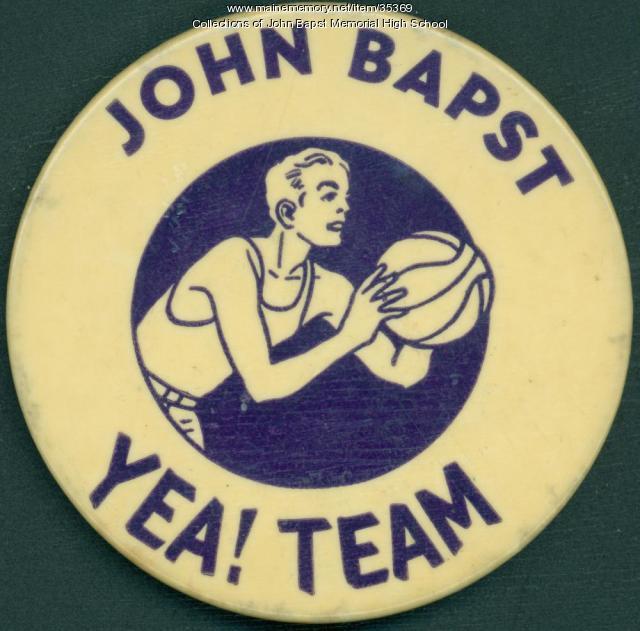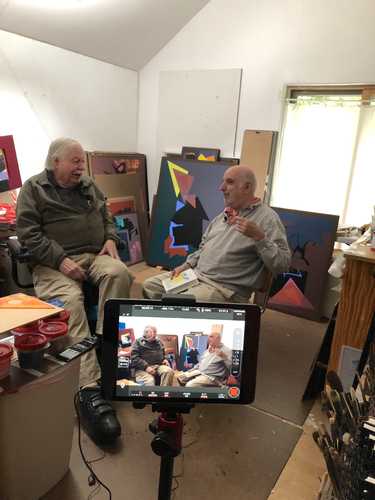Keywords: Art Schools
Item 12393
McMillan School of Fine Arts Vacation School entrance, Rome, 1933
Contributed by: Hollingsworth Fine Arts Date: circa 1933 Location: Rome; Belgrade Lakes Media: Printed black and white photo in original brochure
Item 12391
View from McMillan School of Fine Arts, Rome, 1933
Contributed by: Hollingsworth Fine Arts Date: circa 1933 Location: Rome; Belgrade Lakes Media: Printed black and white photo in original brochure
Item 76260
95-107 Spring Street, Portland, 1924
Owner in 1924: Portland Society of Art Style: Greek Revival Use: Art School
Item 151767
Contributed by: Maine Historical Society Date: 1955–1958 Location: Portland Client: Portland Hebrew School Synagogue Association Architect: Abraham Siegal
Item 151318
School of Fine Arts, Portland, ca. 1914
Contributed by: Maine Historical Society Date: circa 1914 Location: Portland Client: Portland Society of Art Architect: John Calvin Stevens and John Howard Stevens Architects
Exhibit
Young men and women in the 19th century often went away from home -- sometimes for a few months, sometimes for longer periods -- to attend academies, seminaries, or schools run by individuals. While there, they wrote letters home, reporting on boarding arrangements and coursework undertaken, and inquired about the family at home.
Exhibit
Public education has been a part of Maine since Euro-American settlement began to stabilize in the early eighteenth century. But not until the end of the nineteenth century was public education really compulsory in Maine.
Site Page
Guilford, Maine - Guilford Schools
"Both the grade school and high school were decked out with buntings and other festive decorations for the town of Guilford’s Centennial celebration."
Site Page
John Bapst Memorial High School
View collections, facts, and contact information for this Contributing Partner.
Story
William Manning in conversation with Christopher Crosman
by William Manning and Christopher Crosman
A conversation between an artist and art historian
Story
Argy Nestor - Arts Educator & Arts Education Consultant
by MLTI stories of Impact Project
Argy Nestor reflected on the professional development model implemented in the original MLTI.
Lesson Plan
Maine Monochromatic Oceanscape
Grade Level: 6-8
Content Area: Visual & Performing Arts
This lesson plan will give students an overview of the creatures that live in the Gulf of Maine, real and imagined. Students will be able to describe the creatures they learn about, first learning simple art skills, and then combining these simple skills to make an Oceanscape picture that is complex.
Lesson Plan
Grade Level: 3-5, 6-8, 9-12
Content Area: Social Studies, Visual & Performing Arts
"In the four quarters of the globe, who reads an American book?" Englishman Sydney Smith's 1820 sneer irked Americans, especially writers such as Irving, Cooper, Hawthorne, and Maine's John Neal, until Henry Wadsworth Longfellow's resounding popularity successfully rebuffed the question. The Bowdoin educated Portland native became the America's first superstar poet, paradoxically loved especially in Britain, even memorialized at Westminster Abbey. He achieved international celebrity with about forty books or translations to his credit between 1830 and 1884, and, like superstars today, his public craved pictures of him. His publishers consequently commissioned Longfellow's portrait more often than his family, and he sat for dozens of original paintings, drawings, and photos during his lifetime, as well as sculptures. Engravers and lithographers printed replicas of the originals as book frontispiece, as illustrations for magazine or newspaper articles, and as post cards or "cabinet" cards handed out to admirers, often autographed. After the poet's death, illustrators continued commercial production of his image for new editions of his writings and coloring books or games such as "Authors," and sculptors commemorated him with busts in Longfellow Schools or full-length figures in town squares. On the simple basis of quantity, the number of reproductions of the Maine native's image arguably marks him as the country's best-known nineteenth century writer. TEACHERS can use this presentation to discuss these themes in art, history, English, or humanities classes, or to lead into the following LESSON PLANS. The plans aim for any 9-12 high school studio art class, but they can also be used in any humanities course, such as literature or history. They can be adapted readily for grades 3-8 as well by modifying instructional language, evaluation rubrics, and targeted Maine Learning Results and by selecting materials for appropriate age level.




















